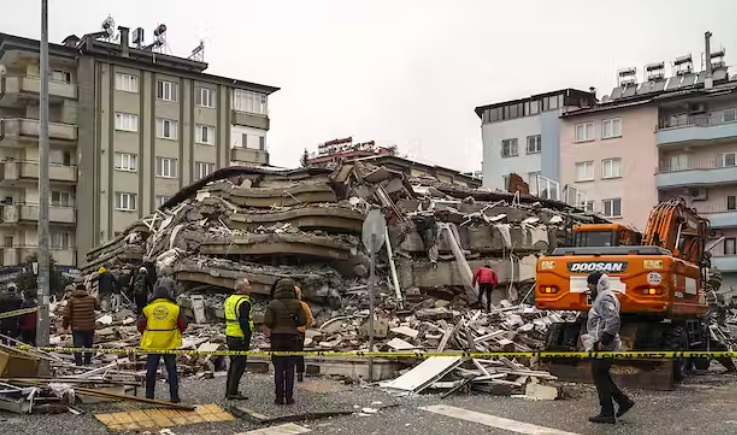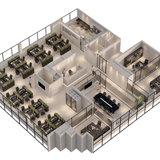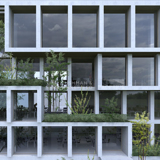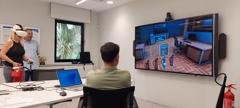The first quake, near Gaziantep, the city on the border with Syria, had a magnitude of 7.8 and was felt as far away as the UK. The second occurred nine hours later, with a magnitude of 7.5.
Adding to the devastation, about 3,450 buildings have collapsed, according to the Turkish government. Many modern buildings that are only two or three years old have failed to withstand the enclave's size in a structural collapse called "pancake collapse." That is, the way the floors of a building collapse and fall on top of each other (which also happened in the case of the Twin Towers in September 2001 in the USA).
Why did this happen? Was it just the sheer size and violence of the earthquake, or is it the buildings themselves that are the problem? Earthquakes are common in Turkey, which is located in a very seismically active region where three tectonic plates are constantly pushing against each other beneath the Earth's surface. Historical records of earthquakes in the region go back at least 2,000 years, to an earthquake that leveled a dozen cities. As experts explain, the Anatolian fault zone that hosted these earthquakes is located at the boundary between the Arabian and Anatolian tectonic plates, which are moving together at a rate of about 6 to 10 mm per year.
The elastic stress accumulated in this zone is released by earthquakes, which have occurred over millions of years. According to the same sources, in the last 2,000 years we have learned a lot about how to build buildings that can withstand shaking even from strong earthquakes. However, in reality, there are many factors influencing building construction practices in this region and others worldwide.
Property structures that did not adequately comply with the minimum seismic building construction standards
Many of the collapsed buildings appear to have been constructed of concrete without adequate seismic reinforcement. Seismic building codes in this area suggest that these buildings should be able to withstand strong earthquakes (where the ground accelerates by 30% to 40% of normal gravity) without suffering this type of collapse. As experts explain, earthquakes of magnitude 7.8 and 7.5 on the Richter scale seem to have caused tremors in the range of 20% to 50% of gravity.
Thus, a proportion of these buildings failed at stresses lower than the 'design rule'. There are known problems in Turkey and elsewhere with ensuring safe construction of buildings and compliance with seismic building codes. In fact, they recall that similar building collapses have been observed in previous earthquakes in Turkey such as the 1999 earthquake that left behind 17,000 dead (1,000 in Istanbul) and 20,000 buildings destroyed.
The re-construction process
Although Turkish authorities know that many buildings are not safe in earthquakes, it is still difficult to solve this problem. Many of the buildings have already been constructed and seismic retrofitting may be expensive or not considered a priority compared to other socio-economic challenges.
However, post-earthquake reconstruction may provide an opportunity for safer buildings. In 2019, Turkey adopted new regulations to ensure buildings are better equipped to handle seismic shaking.















